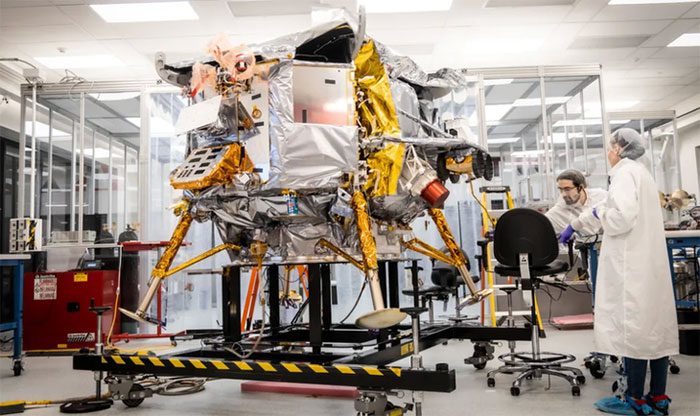After separating from the launch rocket, the U.S. lunar lander is unable to orient its solar panels towards the Sun.
The first U.S. lunar lander in over 5 decades has encountered an unusual issue after separating from its rocket and is en route to the Moon, preventing it from orienting its solar panels towards the Sun.

Peregrine Lander before launch – (Photo: BBC).
On January 8, the robotics company Astrobotic Technology announced that the Peregrine lander successfully separated from the Vulcan Centaur rocket of the United Launch Alliance just one night after launching from Cape Canaveral Space Force Station and quickly established communication with the ground-based antenna network of the U.S. National Aeronautics and Space Administration (NASA).
All systems on the lander were operating as expected, and the lander was “fully operational.” However, “unfortunately, an anomaly occurred that prevented the lander from achieving stable orientation toward the Sun.”
The company is currently analyzing data and addressing the issue.
According to Astrobotic Technology, while in orbit, the solar panel mounted on top of the Peregrine lander must always face the Sun to generate maximum energy.
Once it descends to the lunar surface, the power system will continue to provide reliable energy services to the payload until the mission’s conclusion.
The Peregrine lander is on its way to the Moon and is expected to maintain its trajectory before landing in the mid-latitude area known as Sinus Viscositatis on February 23.
So far, a soft landing on Earth’s closest “neighbor” has only been achieved by a few nations. The U.S. and other countries are increasingly moving towards commercial sectors to conduct routine missions and transport hardware at lower costs.


















































